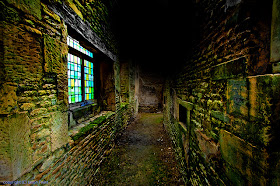 Ring of the Broken Feather - A glowing gold band, hot to the touch, with its exterior worked into
Ring of the Broken Feather - A glowing gold band, hot to the touch, with its exterior worked into the shape of a feather. The ring imperfectly protects the wearer from the attacks and powers of celestial creatures. Outsider Entities of the Lawful Good variety will suffer a -2 on all rolls to physically attack the wearer, and the wearer will gain a +2 to any saves against them.
Scroll of Tormented Form - Written on crackling parchment from some unknown beast, this scroll is heavily wrapped in thick braided black cord and sealed in wax marked with a sigil of Orcus. Within is the 2nd Level Magic User Spell "Tormented Form"
Tormented Form - Level 2 - Magic User Spell - Transformation/Curse
Range: Self Casting Time: 1 Turn Duration: 3D6 Turns
By this horrid ritual the caster may transform his form into that of a sludge-like puddle of flesh temporarily. The process is terribly painful, and the ritual involved requires an uninterrupted turn of disconcerting whispered chanting as well as the incineration of a small piece of the caster's dried skin. After the ritual the caster will liquify, puddling with a series of vile wet sounds.
The disgusting form can crawl and ooze at a rate of 10' per round, climb almost any vertical surface, slide under most doors and through small cracks (of 1/2" or greater size) providing access to or escape from many hard to reach areas. While in liquid form the caster can see and hear as normal, but has no mouth and cannot speak and so cannot cast spells. The blob has sufficient manual dexterity to unlatch doors and work machinery, but lacks the strength to wield weapons, instead attacking by pummeling for 1D4 points of damage.
The transformation lasts exactly 3D6 turns, and cannot be cancelled by the caster prior to it's full duration. When rolling duration, if three sixes are rolled the transformation will be permanent, and is irreversible without diabolic intervention or a wish spell.










